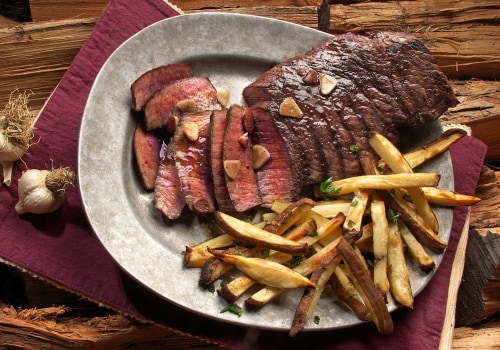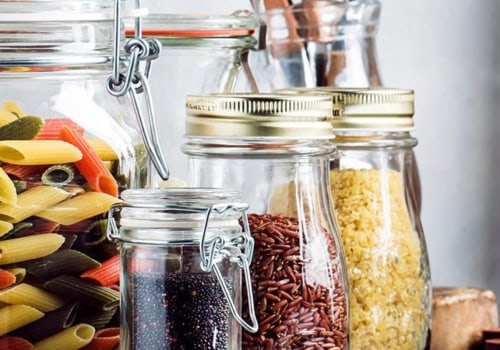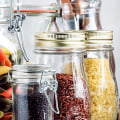If you don't have space to store containers above broth containers, pick up a broth container. This broth starter can be dissolved in water to make your favorite soup or can be added to sauces for flavor. These are the ultimate survival foods for any survival situation. They usually have a shelf life that ranges from 2 to 5 years, depending on the type of meat and storage conditions.
Corned meat will provide you with the nutrients and energy you need so much. We recommend that you buy different types of canned meat, such as spaghetti with giant meatballs, canned fish, spam, smoked ham, Viennese sausages, chicken breast, cured ham, potted meat, roast beef mince, lunch meat and any other good option you find. However, keep in mind that once opened, canned meat can only last three to four days. Therefore, it is advisable to choose the correct can size to avoid waste.
Small cans are more convenient because you can consume them one at a time without leaving any residue. There are about 15 types of beans that are loaded with calories and can last a long time in storage. Canned fruits and vegetables that are properly stored can last about 1 to 2 years. However, the shelf life can deteriorate quite quickly after opening it, approximately 2 to 7 days.
Dried fruits can last approximately 6 to 12 months. Therefore, it is advisable to rotate them to ensure that you don't end up with spoiled fruits in a survival situation. All-purpose flour (normal), flour for white cakes, white bread flour and self-fermenting flour can last up to 12 months at room temperature. But the shelf life of wholemeal, wholemeal and oat flour is slightly shorter, 1 to 3 months.
Dry pasta in a bag can last up to 2 years, but an open pasta bag can last up to 12 months. If properly stored in airtight containers, walnuts can last up to 12 months. The shelf life of protein bars usually ranges from 6 months to 1 year, depending on the type of protein. So, you may have to rotate them every year to ensure you have a new supply each time.
An unopened oat bag can last up to 2 years of storage. However, the shelf life may be reduced to around 1 year after opening the bag. When storing, buy little at a time as you find it and be sure to buy 100% pure honey. Try to find honey from a farmer or look for organic honey in a store.
An unopened alcohol bottle has an indefinite shelf life. However, the shelf life will be reduced to 1 or 2 years after opening the bottle. It will simply lose its flavor and color. Maple syrup can stay in the pantry for approximately 12 months before opening the bottle.
But once opened, the lifespan will deteriorate if not stored in the refrigerator. If stored properly, an opened instant coffee bag can have a shelf life of around 12 to 18 months. Tea, on the other hand, has an average lifespan of around 2 years. This unique bread is made from high quality grains.
It's packed with calories that can help you increase your energy levels in survival situations. An average piece of hard pasta can provide you with 75 to 125 calories. However, this hard water cookie has a mild flavor and you may need to supplement it with a sweetener such as maple syrup. With just boiling water, potato flakes can be turned into potato soup or mashed potatoes.
You can mix potato flakes in flour to make tasty and dense potato bread. This food contains approximately 100 calories per ounce. When sealed in airtight bags, the shelf life of instant potato flakes can range from 10 to 15 years. However, the shelf life is generally reduced to around 6 to 12 months once the bag is opened.
Honey is known to be the most durable and sustainable food source that exists. We can thank bees for their ingenious methods of pollinating flowers and making honey. Honey can last forever (not just twenty-five years) and should always be stored in a dry place with the lid on at all times. Storing food that lasts is much easier than you think, you just need suitable containers, a storage area and the absence of oxygen and water in sealed food containers.
This is a product that you'll probably have to buy from a professional food company for the long term, but it guarantees a lifespan of up to 15 years. It is recommended that stable food be stored in the house rather than in the garage, since the garage usually has greater temperature fluctuations. Many foods with an extended shelf life are the staples, such as rice, grains and salt, but others can last a long time because they are dry or canned. If you have stable foods that are still safe to eat, but you no longer want them, donate them to your local pantry instead of throwing them in the trash.
We recommend that you maintain a food mix with a long shelf life: dry products, canned goods and other foods. I think most people would agree that it's best to throw away a questionable food and avoid food poisoning or a trip to the hospital. If you agree so far, I'm sure you'll also agree that it's wise to store food that lasts longer on the shelf. Food is processed so that it can have a longer shelf life and, at the same time, maintain its nutritional value over a period of months or years.
Each company offers a different type of food and a variety of meals, so you have a lot of freedom to choose what types of food are right for you. Buying large quantities of food that have a longer shelf life provides you with a food cushion for emergencies or for the unexpected loss of work. . .






